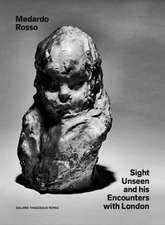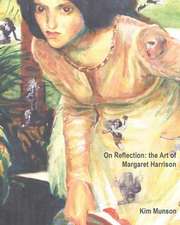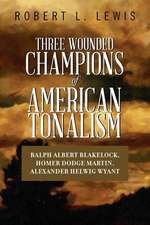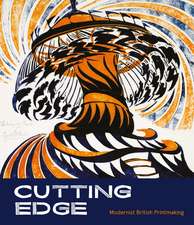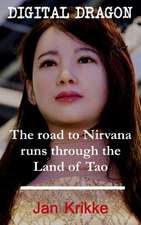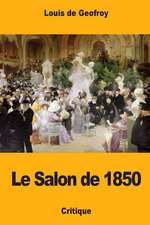Modern Art and the Remaking of Human Disposition
Autor Emmelyn Butterfield-Rosenen Limba Engleză Hardback – 9 noi 2021
With this book, Emmelyn Butterfield-Rosen brings a new formal and conceptual rubric to the study of turn-of-the-century modernism, transforming our understanding of the era’s canonical works. Butterfield-Rosen analyzes a hitherto unexamined formal phenomenon in European art: how artists departed from conventions for posing the human figure that had long been standard. In the decades around 1900, artists working in different countries and across different media began to present human figures in strictly frontal, lateral, and dorsal postures. The effect, both archaic and modern, broke with the centuries-old tradition of rendering bodies in torsion, with poses designed to simulate the human being’s physical volume and capacity for autonomous thought and movement. This formal departure destabilized prevailing visual codes for signifying the existence of the inner life of the human subject.
Exploring major works by Georges Seurat, Gustav Klimt, and the dancer and choreographer Vaslav Nijinsky— replete with new archival discoveries—Modern Art and the Remaking of Human Disposition combines intensive formal analysis with inquiries into the history of psychology and evolutionary biology. In doing so, it shows how modern understandings of human consciousness and the relation of mind to body were materialized in art through a new vocabulary of postures and poses.
Preț: 408.20 lei
Nou
Puncte Express: 612
Preț estimativ în valută:
78.12€ • 84.83$ • 65.62£
78.12€ • 84.83$ • 65.62£
Carte disponibilă
Livrare economică 02-16 aprilie
Livrare express 18-22 martie pentru 71.24 lei
Preluare comenzi: 021 569.72.76
Specificații
ISBN-13: 9780226745046
ISBN-10: 022674504X
Pagini: 352
Ilustrații: 30 color plates, 94 halftones
Dimensiuni: 178 x 254 x 38 mm
Greutate: 1.28 kg
Ediția:First Edition
Editura: University of Chicago Press
Colecția University of Chicago Press
ISBN-10: 022674504X
Pagini: 352
Ilustrații: 30 color plates, 94 halftones
Dimensiuni: 178 x 254 x 38 mm
Greutate: 1.28 kg
Ediția:First Edition
Editura: University of Chicago Press
Colecția University of Chicago Press
Notă biografică
Emmelyn Butterfield-Rosen is the associate director of the Williams College Graduate Program in the History of Art at the Clark Art Institute. She lives in Williamstown, Massachusetts and New York City.
Cuprins
Introduction
One Figures of Thought: Poseuses and the Controversy of the Grande Jatte
Two Beethoven’s Farewell: The Creative Genius “in the Claws of the Secession”
Three The Mise-en-scène of Dreams: L’Après-midi d’un faune
Acknowledgments
Notes
Index
One Figures of Thought: Poseuses and the Controversy of the Grande Jatte
Two Beethoven’s Farewell: The Creative Genius “in the Claws of the Secession”
Three The Mise-en-scène of Dreams: L’Après-midi d’un faune
Acknowledgments
Notes
Index
Recenzii
"Butterfield-Rosen's Seurat chapter should be mandatory reading for students of nineteenth-century art. . . . a breakthrough."
"[A] masterful examination of turn-of-the-century works of art . . . The bold study treats three pairings of works of art in a sweep of as many decades across Europe—in French easel painting, in an Austrian room-size installation, and in a Russian ballet that each shows human figures standing, sitting, and reclining. . . As a whole, the reading constitutes a brilliant cultural history beyond the dialectics of these three pairings. . . . Every page offers argument and evidence in serious yet readable and witty style and fine illustrations . . . Rarely does one see claims and ambitions so well presented and then fulfilled, critically, carefully, and playfully."
"Butterfield-Rosen's book lays out the evolution of the compositions from conception to presentation and explores the intellectual zeitgeists, especially biological and psychological inquiry. A wealth of contemporaneous criticism, both written and illustrated, is also included. Whether derogatory or insightful, the revelatory reviews confirm a public’s alertness to visual imagery that expresses psychic inner life. Researchers of modernism will surely rely on the book’s rigorous exposition of disposition for future investigations. . . . Recommended."
"Butterfield-Rosen is an academic, and her prose is the densely rich stuff of academic art history. It is also insightful, illuminating, and philosophically robust... Butterfield-Rosen's impressive mastery over disparate bodies of knowledge and fastidious attention to the privileged place of art in reconceptualizing modern understandings of humanness will appeal to intellectually inclined readers."
"But here . . . my aim is to praise Butterfield-Rosen for opening up discussion in a marvelously thorough analysis, which is surely to be developed by her successors. In the very best art history writing—but this is all too rare—there is what I dub the ‘ah-ha’ moment, when suddenly familiar works change before your eyes. That happened for me when, long ago, I read Michael Fried’s book on eighteenth-century French painting (1980). And when I studied Butterfield-Rosen’s link of Poseuses to Grande Jatte, I had that experience again. Reinterpreted, a painting that I thought I knew fell into place in a novel, deeply satisfying and revelatory way. She is erudite, she can write, and she has a sense of humour, too. And she has been supported by the publisher in a well-edited, beautifully illustrated book."
"This book is to be commended for its brilliant hermeneutic exploration of the human body in a selected group of art works and texts."
"Butterfield-Rosen offers a new vantage from which to consider the impact of evolutionary theories on art-making. . . Modern Art is nothing other than a tour de force."
"A brilliant feat of scholarly innovation that seems just as obvious and simple as it is surprising and remarkable. . . . The book is distinctly elegantly written, beautifully and cogently illustrated and typeset, and thus a pleasure to read. . . . With its exceptionally broad scope, the book testifies to the author’s boldness in combining speculative theses with intellectual rigor, and in so doing, demonstrates how it is still possible today to cast landmarks of the Western art canon in an innovative and exciting light. I am convinced that this book will become an influential reference for present and future generations of scholars of modernism."
"Uniquely valuable. Because its topic is so ambitious, its analytic framework so clear, this study should spark thoughts about subjects far afield of her stated scope—helping us to think for ourselves. . . . It is a testament to the intellectual generosity of Butterfield-Rosen’s text that it arms us with the analytic tools to see such developments as part of the historical genealogy that she sets before us."
"Within intelligently laid out theoretical frameworks, [Butterfield-Rosen] illuminatingly brings social and discourse history, reception aesthetics, and visual studies together. The theses are convincingly elaborated through an intensive examination of the material. . . The study leaves nothing to be desired in its intellectual reach, in the precision of its observations and argumentations, and in its lucid, descriptive presentation."
“Right at the helm of new writing about the twentieth-century body stands Butterfield-Rosen’s brilliant, precise, meticulous study of gestures and stances, dispositions, movements, and postures. In Seurat, Klimt, and Nijinsky, she identifies a veritable feedback between viewer and work, between modernism and the science and beliefs it drew on and reshaped. This book is a dazzling achievement whose scope and importance reach far beyond art history.”
“Butterfield-Rosen’s strategy of examining the disposition of poses in order to contribute to histories of the self is nothing short of a brilliant, and her discussion of the trafficking between abstract concepts and concrete practices is rigorous, original, and convincing. This is an area in which the discipline of art history is in a privileged position to contribute to a broader history of ideas, and she makes skillful use of the weapons in an art historian’s arsenal, including formal and iconographic analysis.”
“Butterfield-Rosen provides an unprecedented and compelling exploration of how the representation of the human body was reimagined and reconceptualized in late nineteenth- and early twentieth-century European art. A lucid and exhilarating book.”
“What is most distinctive about Butterfield-Rosen’s important study is the scope of its ambition, joining fascinating close readings with a genealogy of the very foundations of art historical analysis. It turns to the basic claim of European art history that it is of deep cultural significance how the human body is represented. While demonstrating the artistic and epistemic productivity of this assumption, Butterfield-Rosen offers a critical account of its emergence and crisis around 1900.”
“Modern Art and the Remaking of Human Disposition is original, creative, erudite, soundly argued, and convincingly substantiated. It constitutes an important intervention in the history of late nineteenth-century and early twentieth-century European art, offering a subtle linkage between aesthetic theory and socio-psychological conceptions of selfhood.”


